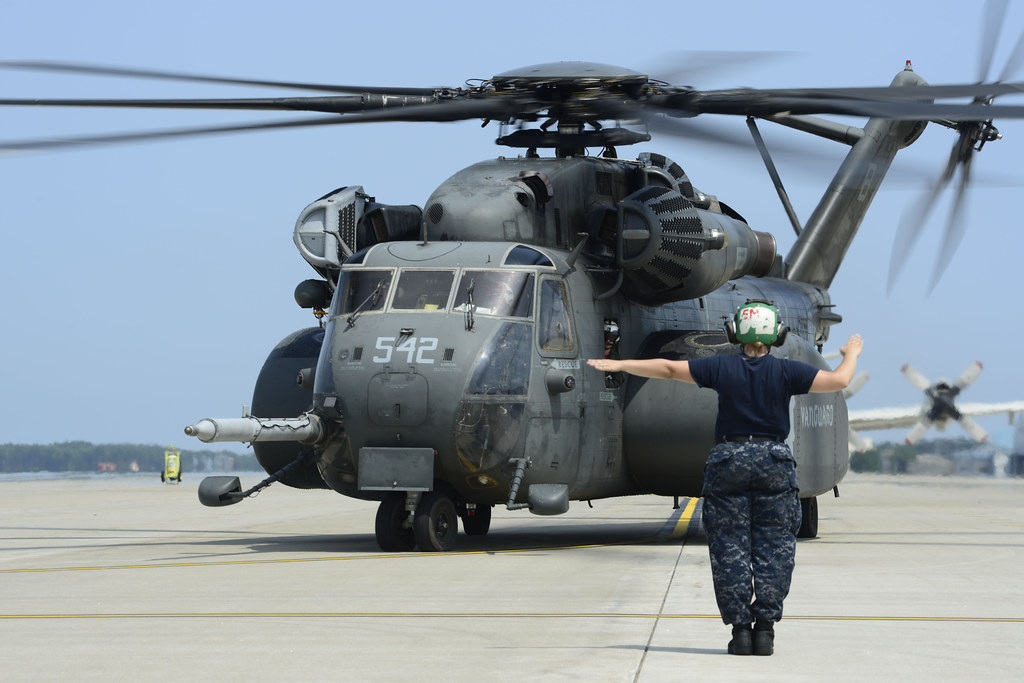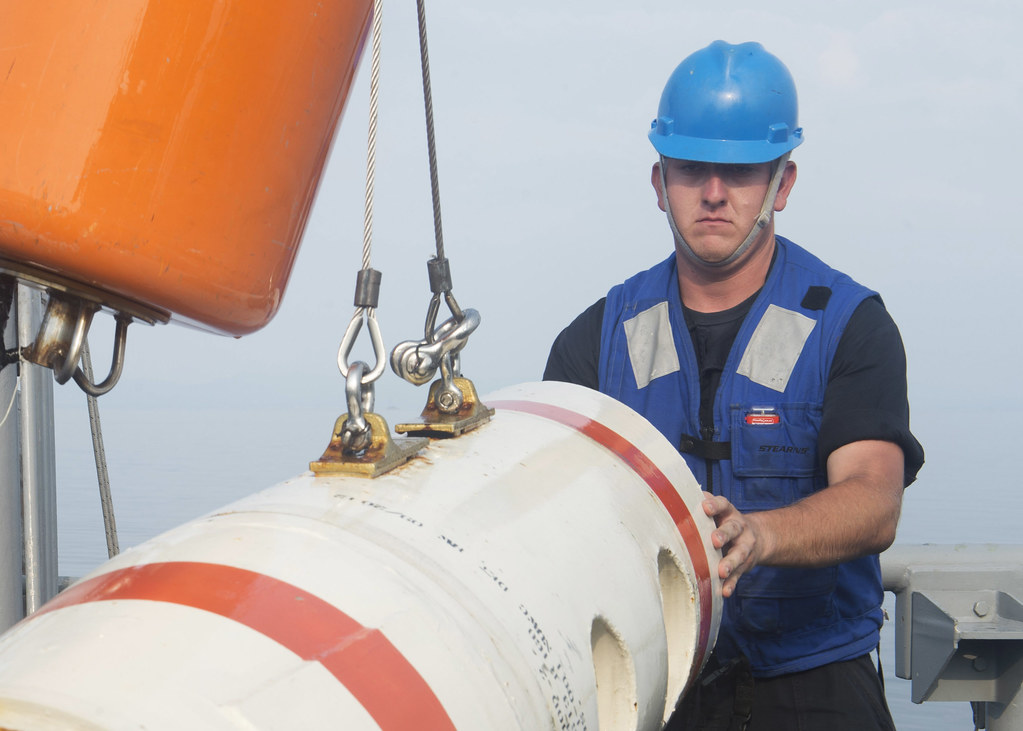From Amphibious Force 7th Fleet Public Affairs
Aviation Structural Mechanic Airman Destiny Peaker signals an MH-53 Sea Dragon attached to Helicopter Mine Countermeasures Squadron 14, during operations at Misawa Air Base, Japan, July 20. (U.S. Navy/MC3 Samuel Bacon) >>
MUTSU BAY, Japan - A series of initial operations are taking place as U.S. and Japan forces prepare for more complex and integrated mine countermeasures operations as part of 2JA Mine Countermeasure Exercise (2JA MCMEX).
The annual exercise, which officially began July 19, brings together Japan Maritime Self-Defense Force (JMSDF) and U.S. Navy surface and air mine countermeasures assets, teamed with explosive ordnance disposal personnel.
The exercise is being held to strengthen interoperability and increase proficiencies in mine countermeasures operations.
“2JA is an incredible opportunity for our forces and our staff to conduct complex mine countermeasures operations with our much valued ally and friends, the Japanese Maritime Self Defense Force,” said Capt. Jim Miller, Commodore, Mine Countermeasures Squadron 7. “This is the second year I have personally been involved in 2JA, and I can say that it is great to be working with counterparts whom we established such close bonds with.”
Several events have taken place to ensure that each unit can get maximum training value out of the exercise.
<< U.S. Navy Sailors from Explosive Ordnance Disposal Mobile Unit 5 prepare for a diving exercise with members of the JMSDF and the Republic of Koreas Navy Underwater Demolition Team in Mutsu Bay, July 19. (U.S. Navy/MC2 Alfred A. Coffield)
U.S. P-3C Orion and JMSDF EP-3 Elint aircraft dropped mine shapes in the exercise training area on July 20, which will aid in the realism of the training.
USS Pioneer (MCM 9), forward-deployed to Sasebo, Japan, has been performing unit-level tests of their mine countermeasures equipment and other communication checks to ensure they are interoperable with other participating JMSDF surface MCM assets.
Explosive Ordnance Disposal Mobile Unit (EODMU) 5 personnel have conducted several dives with JMSDF members, in order to increase proficiencies in search techniques for sea-based mines.
Helicopter Mine Countermeasures Squadron 14 Det 2A, operating from Misawa, Japan, has been conducting deck landing qualifications with JS Bungo (MST 464) , the flagship of the MCM force. MCMRON 7 is embarked on Bungo to coordinate and execute the exercise.
Participating Sailors are grateful for the opportunity to work alongside their counterparts.
Mineman 3rd Class Paul Darr assists in retrieving an inert mine shape during MCMEX, July 21. (U.S. Navy/MC2 William McCann) >>
“It’s great being out here, doing our part to strengthen the relationship between the JMSDF and U.S. Navy,” said Mineman Seaman Emilio Reyes. “We make each other better in making sure we keep efficient in mine hunting.”
As the exercise progresses, participating units will practice unit-level mine countermeasures tactics to include sweeping for mines and using sonar equipment to detect mines. Explosive ordnance disposal unit personnel conduct dive operations in support of mine countermeasures efforts.
The exercise will culminate in a combined phase in which U.S. and JMSDF will coordinate and communicate to ensure a route is clear of mines in one of the designated exercise areas.
U.S. units participating include USS Pioneer (MCM 9), Explosive Ordnance Disposal Mobile Unit (EODMU) 5, Helicopter Mine Countermeasures Squadron 14 Det 2A, and staff from Mine Countermeasures Squadron (MCMRON) 7.



